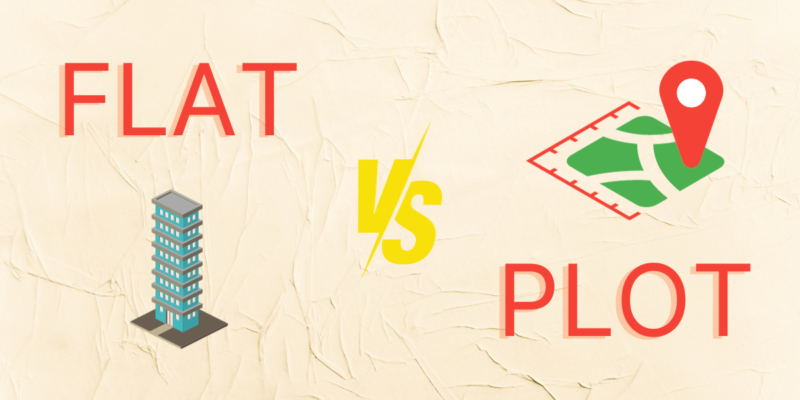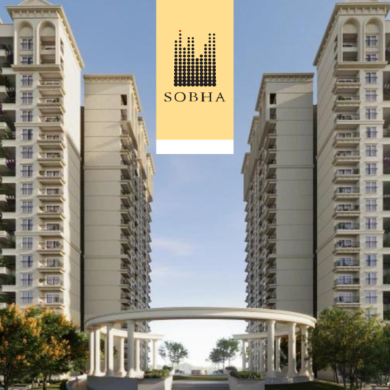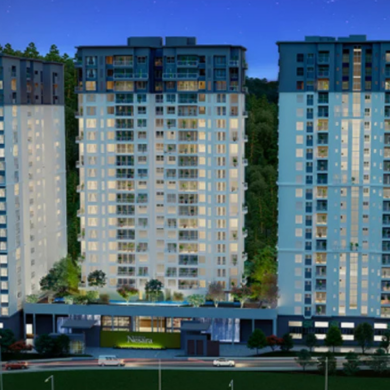
Choosing between Flat vs Plot can be challenging, especially for first-time buyers and investors. Flats offer convenience and shared amenities, suitable for urban living. Plots provide more freedom for custom construction but may require additional development.
Deciding between flat and plot hinges on various factors such as location, budget, requirements, and long-term goals. Flat vs Plot – The choice is about the physical structures and crafting a living experience that resonates with individual preferences, lifestyles, and needs. A flat is a unit within a multi-story building, while a plot is an individual piece of land.
Investing in a plot means building a house as per the requirements of an individual and getting the ownership, while a flat is a multi-floored construction where no one can change the layout or size, but it gives the benefit of location, security, and accessibility.
Table of Contents
Definition and Characteristics of Flat vs Plot
Defining Flats
A flat or apartment is a self-contained living space within a larger building or complex. These are more popular in urban areas and often come with shared amenities and facilities to improve the quality of living. The convenience of a flat, with shared facilities and a close-knit environment, makes it a popular housing choice in bustling urban landscapes.
Defining Plots
Residential plots represent an undeveloped land parcel for housing construction. It serves as a canvas for individuals to build their dream homes. Plots can be customised and personalized in terms of design and layout based on individual preferences. Residential plots are intended for housing, while commercial plots cater to business needs. Agricultural plots are designated for farming purposes.
Ownership and Legal Aspects in Flat vs Plot
Nature of Ownership in Flat
When a buyer purchases a flat or an apartment, they get possession of that specific unit within the entire building complex. In typical flat living, all flat owners, and tenants of that complex share access to the common areas, such as hallways, stairs, elevators, and parking lot.
What are Leasehold and freehold?
A leasehold flat means the owner has the right to use the property for a specific period, usually long-term but not indefinite. On the other hand, freehold means complete ownership of the property and the land.
Legal aspects to consider while buying flat –
- Understand the terms of the lease or freehold agreement.
- Check the property’s title deeds.
- Check land-use permissions and clearances.
- Review occupancy certificates.
- Details of maintenance charges for shared spaces & common amenities.
Nature of Ownership in Plot
When an individual buys a plot or land, they get the complete rights over that land and the ownership of the structure built on that plot. Plot ownership allows you to choose the design of the structure and layout you want to build on this land.
Understanding land ownership regulations is important when it comes to plot ownership. Different regions may have specific rules for the same, along with zoning laws & land-use restrictions.
Legal aspects to consider while buying a plot –
- Verify title deeds and sale deeds.
- Check land survey records.
- Review land-use certificates.
- Consult legal experts to avoid complications.
A buyer can make informed decisions when purchasing a plot by being well-versed in land ownership regulations, zoning laws, and necessary documentation.
Investment Considerations in Flat Vs Plot
Investment Considerations in Flat-
Investing in flats involves considering different aspects to ensure a profitable venture. Appreciation and depreciation factors play a pivotal role. The location, infrastructure development, and neighbourhood influence a flat’s value over time.
Factors to consider while investing in a flat- –
- Analyse market trends.
- Understand demand-supply dynamics.
- Invest in areas experiencing growth & development.
- Understand the price trends of the specific areas.
Investing in flats requires a comprehensive understanding of appreciation factors, rental income potential, and market trends. By making strategic choices, investors can navigate the real estate landscape effectively, ensuring a sound and potentially lucrative investment.
Investment Considerations in Plot –
According to real estate experts, plots are appreciated faster than flats because they are less in supply in the market. The property age factor does not impact the plot investment in the same way it does for flats. The appreciation value depends on the location and proximity to substantial infrastructure projects. The worth of the plot increases with time.
The age factor doesn’t influence plot investments in the same way it does for flats.
Factors to consider while investing in the plot –
- Check the location of the land.
- Check the proximity of the plot’s essential amenities, transportation hubs, and neighbourhoods.
- Understand the development potential of the plot with the help of factors such as soil quality and topography.
By assessing these factors, investors can position themselves for long-term success in the real estate market, unlocking the full potential of their plot investments.
Cost Analysis for Flat Vs Plot
-
Cost Dynamics of Flat Ownership:
The purchase cost involves the actual price of the flat, but additional expenses must be considered, such as registration fees, stamp duty, and legal charges. Factoring in these costs ensures a thorough assessment of the total investment.
Monthly maintenance fees are another significant consideration. It’s important to include these fees in the overall budget to gauge the affordability of the flat accurately. Hidden costs associated with flat ownership can sometimes catch buyers off guard. These may include unforeseen maintenance or repair expenses, property taxes, and insurance costs.
Must Read: How to Calculate The Total Cost of Buying A Flat in Bangalore?
-
Cost Dynamics of Plot Ownership:
Before buying a plot, it is important to do a thorough cost analysis to understand the initial land cost. This is the actual cost of the plot, along with the associated fees such as stamp duty, registration charges and development costs.
Expenses related to preparing the land for construction, such as grading, clearing, and infrastructure development, should be factored into the overall budget. Ongoing expenses related to land ownership, property taxes, maintenance costs and any homeowner’s association fees are also important for long-term financial planning. Understanding these costs helps buyers to make informed decisions based on their development plans for the plot.
Lifestyle Considerations in Flat Vs Plot
Lifestyle in Flat Living
- Flats often foster a sense of community, allowing residents to engage in social interactions and shared activities. Hence, the community living experience is a defining feature.
- Security and safety are paramount in flats. Many residential buildings have security features like gated entrances, surveillance systems, and concierge services, providing a secure living space to the residents.
- Proximity to amenities and services is a key lifestyle consideration. Flats, typically situated in urban areas, offer convenience to essential services, schools, shopping centres, and recreational facilities.
- Understanding and prioritising these aspects allows residents to make informed decisions aligned with their preferences.Must Read:
- 8 Benefits of Living in An Apartment Complex
- 10 Benefits of Living in Luxury Apartments
Lifestyle in Plot Living
- Privacy and space considerations are significant perks of owning a plot. Plots offer more secluded living, allowing residents to enjoy a private and expansive environment that they can shape according to their preferences.
- An important advantage of plot living is that customisation according to specific needs can be implemented.
- Plots may offer a more serene living experience and access to all necessary amenities for a balanced lifestyle.
Lifestyle considerations in plots revolve around privacy, freedom of architectural choices, and the availability of nearby infrastructure and facilities. Evaluating these factors allows plot owners to align their choices with their desired lifestyle, ensuring a fulfilling and personalised living experience in the expansive realm of plots.
Summary of the Difference Between Flat Vs Plot
Flats offer immediate convenience and security with shared amenities, while plots provide potential for personalised construction and higher long-term appreciation but require more individual management and security measures. To understand the difference quickly, let’s read the following pointers –
Parameter |
Plot |
Flat |
| Cost | Generally lower initial cost |
Higher initial cost, inclusive of amenities |
| Regular Income | Limited options for generating income | Potential for rental income |
| Value Appreciation | Potential for higher appreciation | Appreciation may be comparatively lower |
| Bank Loans | More Challenging | Easier access to home loans |
| Value of Money | Potential for better long-term returns | Immediate utility and comfort |
| Tax Benefits | Limited tax benefits | Eligible for various tax deductions |
| Construction Quality | Depends on individual development | Consistent quality in multi-unit buildings |
| Legal Verification | Crucial due diligence required | Typically, well-verified by developers |
| Flexibility | More freedom in design and construction | Limited customisation options |
| Security | May require additional security measures | Inbuilt security features in apartment complexes |
| Amenities | Limited or dependent on local facilities | Shared amenities within the complex |
| Convenience | May require self-management of services | Centralized management and services |
| Risk | Dependent on market trends and locality | Lesser risk due to shared responsibilities |
Conclusion
The choice between a flat and a plot hinges on various factors, each offering distinct advantages. Flats, promoting community living and often located in urban centers, are suitable for those valuing convenience and shared amenities. On the other hand, plots provide privacy, customisation, and potential appreciation, catering to those seeking a more individualistic and expansive living experience.
Before deciding, consider all the important factors, such as lifestyle preferences, budget constraints, and long-term goals. Assess both options’ financial implications, legal aspects, and lifestyle considerations. Tailor your decision to your unique preferences and future. Whether opting for the community-oriented lifestyle of a flat or the freedom and space of a plot, making an informed improves the quality of lifestyle you want.
Curious to know more about the differences between flats and plots? Here are some frequently asked questions (FAQs) to provide you with insightful information on the same-
FAQs:
Q1: What is the primary difference between a flat and a plot?
Flats are typically multi-story residential units within a building, while plots refer to parcels of land that can be developed or used for various purposes.
Q2: What are the common types of flats?
Flats can include apartments, condominiums, and other multi-unit residential structures, each with its own set of features and amenities.
Q3: What legal considerations should I be aware of when buying a flat?
Legal aspects may include leasehold or freehold ownership, maintenance charges, and compliance with building regulations. It's essential to review documentation thoroughly.
Q4: How does land ownership work for plots?
Plots involve owning a piece of land, and legal considerations include zoning laws, land-use restrictions, and documentation verifying ownership.
Q5: Which one of these is better for investment - flats or plots?
Both have their advantages. Flats offer rental income potential and market stability, while plots may appreciate over time, especially in developing areas.
Q6: What costs should I consider when buying a flat?
Consider the purchase cost, maintenance fees, and potential hidden costs associated with flat ownership, such as repair and renovation expenses.
Q7: What costs are associated with purchasing a plot?
Initial land cost, development expenses (if applicable), and ongoing ownership costs like property taxes are crucial factors when purchasing a plot.
Q8: How do lifestyle considerations differ between flats and plots?
Flats offer community living with shared amenities, security, and proximity to services. Plots provide more privacy, space, and freedom for personalised architecture.
Q9: Is it better to choose a leasehold or freehold property?
The choice between Leasehold and freehold depends on personal preferences and long-term goals. Freehold offers full ownership rights, while Leasehold involves a lease agreement.
Q10: How do I decide between a flat and a plot based on my needs?
Consider factors like lifestyle preferences, investment goals, legal aspects, and costs. Tailor your decision to align with your individual priorities and objectives.







